- Home
- alleyinsider
- 18 things no one tells you about being on 'American Ninja Warrior'
18 things no one tells you about being on 'American Ninja Warrior'
1. It's really easy to apply.
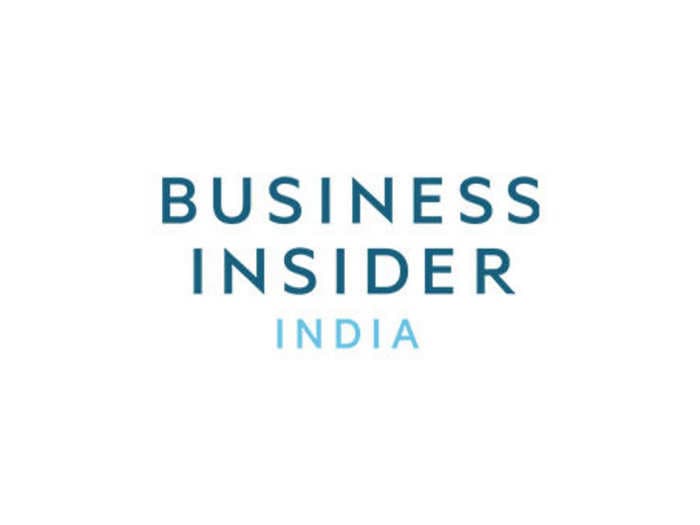
2. They don't just want a bunch of athletes.

For the video, the show wants contestants to show how physically impressive they are, but also to appear as an interesting human being. "Let your personality shine through," the guidelines recommend.
They want someone with a good story, not just a jock. Akiva Neuman, a contestant in season 8, is a rabbi-in-training.
"They take some older people, like that are in their sixties and seventies," Neuman told INSIDER. "They could be very strong, but the odds of them actually competing the course is slim... They took a guy who served in the army and he had lost a leg. He got 'till like the fourth obstacle."
Logan Broadbent, another contestant on that episode, is a professional athlete — but an offbeat one. He's on the United States boomerang team.
"I've been competing on boomerang competitions since before I could walk," Broadbent said. "So I guess that was a bit of a hook."
3. You only get two weeks' advance warning before the show.
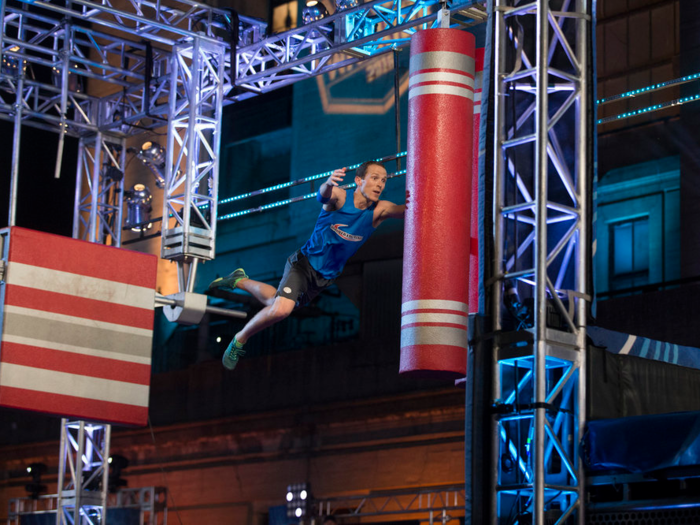
"I figured there were 75,000 applying to this thing, so I didn't really expect a call," Broadbent said. About two weeks before the competition, a producer called him to ask him to be a contestant on the show.
To prepare, Broadbent changed his usual workout regiment to emphasize grip strength, doing more rock climbing, which would be better for the obstacle courses.
"I started watching previous seasons to see what obstacles have been done, and what I should be working on — from balance, to strength, to agility," Broadbent said. "I started practicing all those techniques."
4. They're REALLY careful to represent your life accurately.
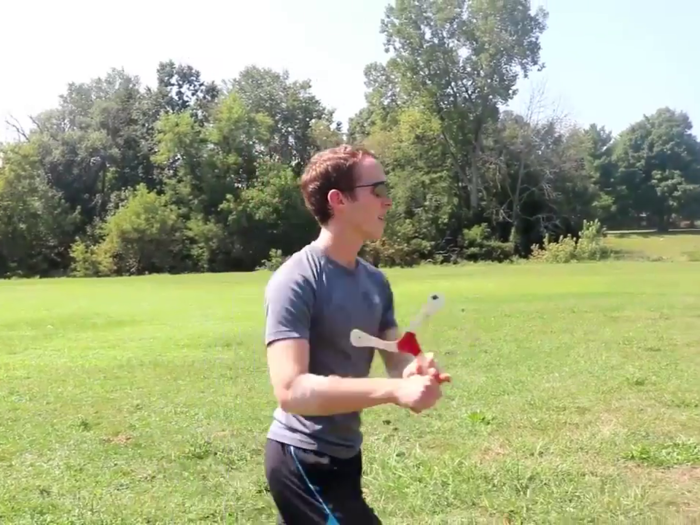
For each episode of "American Ninja Warrior," ten people get their own video profile to show what their "day in the life" is like. Videos are only a couple of minutes long, but the producers take great pains to make sure they're accurate.
Neuman spends his days praying, learning Talmudic thought at Yeshiva University, working as a synagogue youth director, spending time with his wife and son, and working out at the gym. In addition to capturing all those facets, the video needs to be careful not to misrepresent some of the more esoteric parts of how a rabbi-in-training lives his life in following Jewish tradition.
A film crew spent an entire day filming Neuman, taking more than nine hours of footage to try to nail a two-minute video.
Neuman was pleased with the result. It managed to show what a day-in-the-life of Akiva Neuman was like. Plus, it was kind of funny.
"There was a lot of good, kosher Jewish humor that I think everyone appreciated," he said.
Because Broadbent is a professional athlete, his profile was more about his athletic pursuits. But he still had some concerns. He wanted to make sure boomerang throwing was represented accurately.
"A lot of people think boomerangs were used as weapons. But in reality, boomerangs were never used as weapons," Broadbent said. "I wanted to make sure they were never portrayed as dangerous. In competitions, we never hit targets, we never hit things. We throw and catch. We are the targets."
Broadbent wanted to make sure the audience understood that while boomerang playing might be a niche sport, it's also a serious one that demands intense athletic prowess.
"I didn't want it to come across as a joke," Broadbent said. "They did a great job with it. It was honest, it was accurate."
5. A lot gets cut out.
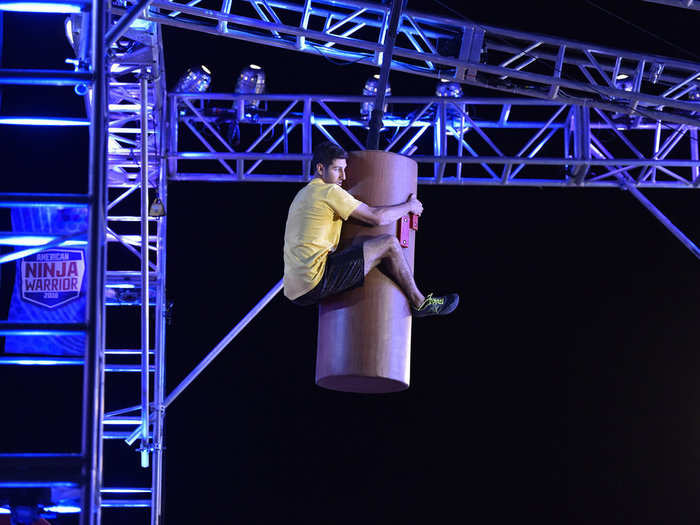
The point of these videos is to get you invested in the characters who are about to run an insane obstacle course. The producers want you to care. But of course, a two-minute video can't plumb the depths of the soul as well as a Ken Burns documentary.
The video omits some information. For example, Neuman is a CPA in addition to a rabbi-in-training, and is pursuing a career in accounting, not just rabbinical work.
Neuman thinks it was a smart approach.
"My main story from their perspective was my rabbinic aspect, because that had the most appeal," Neuman said. "It's not that I wasn't anything else; they just chose to focus on what they thought would be most appealing."
Broadbent is a full-time financial manager at General Electric, but the show focused on his boomerang skills. The show also didn't dig deeper than the contestant wanted. Broadbent said he had some parts of his life that he wanted to keep offscreen, and the show complied.
"They let me tell my story," he said. "Which is refreshing, because you don't always expect that in a TV show."
6. Some stuff is staged for the camera.

Neuman gets up at 6 a.m. every day to work out. The film crew had him recreate that part of his day.
"It was 10 or 11 o' clock, and I pretended to stretch my arms, walk to the pull up bar, do pull ups," Neuman said. "I did that multiple times. I repeated a lot of things."
Broadbent also had a film crew spend a day making a film about him. But the emphasis was more on his athletic pursuits, so it was more staged than Neuman's. The crew took drone footage of his boomerang skills, and other footage of him swimming, running, and generally looking really athletic for the camera. For his video, NBC used some of his audition footage in addition to the stuff they shot themselves.
7. You have to get to the "American Ninja Warrior" set yourself, and pay for your own hotel.
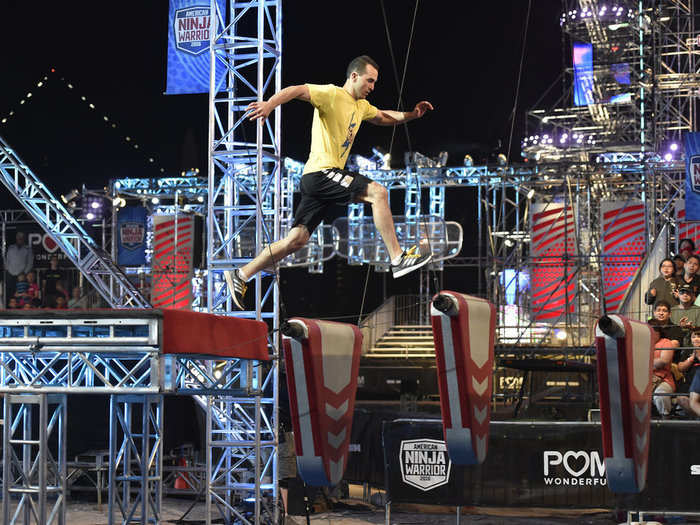
Each episode takes place in a major city with contestants from that region. In Neuman's and Broadbent's case, the show was in a former power plant in Philadelphia. Neuman drove up from New York City, where he lives, and Broadbent flew in from Cleveland. They have different competitions for people on the west coast, or in the middle of the country.
8. You have to bring your own outfits and do your own makeup.
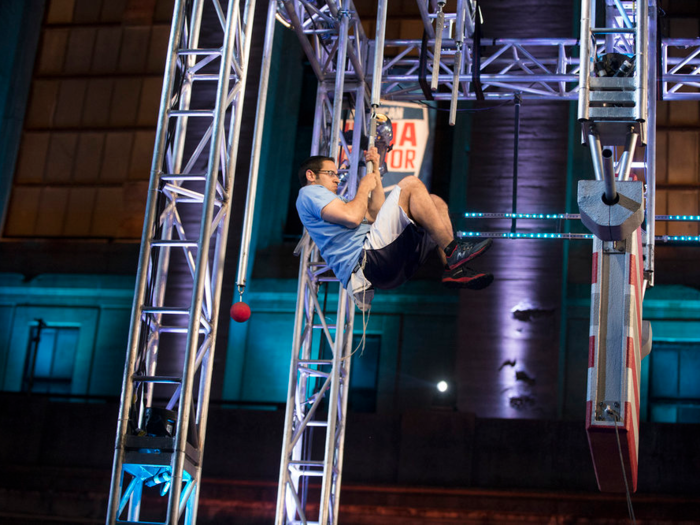
It's television! People get dressed up. In the case of "American Ninja Warrior", the contestants have fun with it and wear everything from actual ninja garb to light sportswear. They bring it themselves; NBC doesn't prepare anything.
Clothing can also be part of the strategy to make it through an obstacle course. Sometimes, course runs include parts where contestants have to hold on to an object hanging from the ceiling. If your clothes are more rubbery, you can use them to grip your body better.
9. Before anyone runs the course, they tell you what to expect.
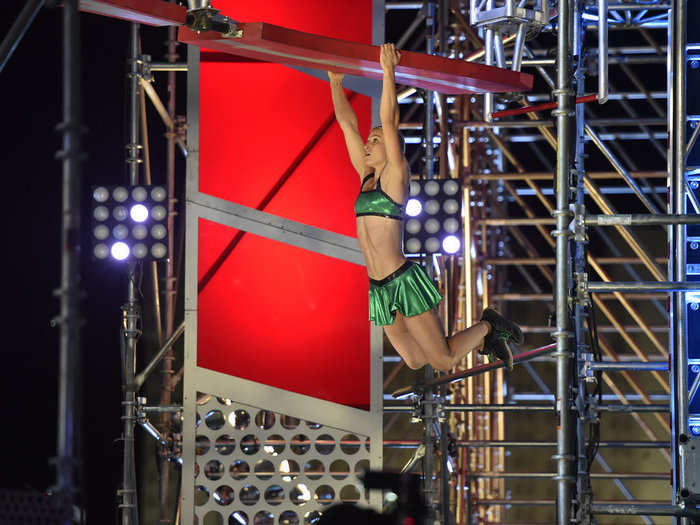
Someone from the show walks all the contenders through each obstacle, and they'll tell you how to accomplish it. If you choose a different strategy, that's on you.
They'll also tell you what you're not allowed to do. For some obstacles, for example, you're not allowed to use your hands. And for others, you're not allowed to use your feet.
"I remember when I was watching the show, before I competed, I was like, 'Why aren’t they using their feet?' It’s more awkward, maybe, but no one was attempting it," Neuman said. "Now I know why."
10. 130 people run the entire obstacle course, but only 20 or so people are shown running the course on the television show.
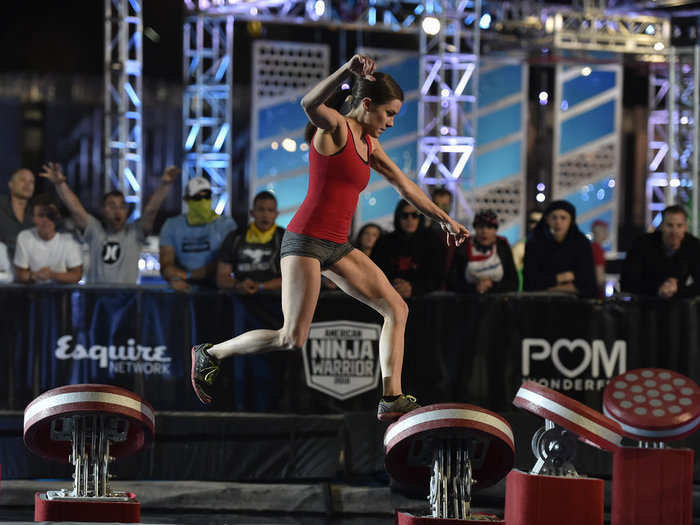
NBC doesn't show the contenders in order of when they ran, and they also skip a lot of people. Neuman estimates that about 130 people competed alongside him. NBC shows somewhere between 20 and 30 people in each episode.
He wasn't worried about making the cut, though, because NBC already invested in a film crew to document his life for a day. They'll show all of those people running the course, and they'll also show people who have competed before and are now established characters on "American Ninja Warrior."
They'll also show injuries.
"Anyone who gets seriously hurt, they’re gonna show it," Neuman said. "Because it’s like, 'Oh wow, did you see that? He just got hammered!'"
11. There are some walk-on contenders.
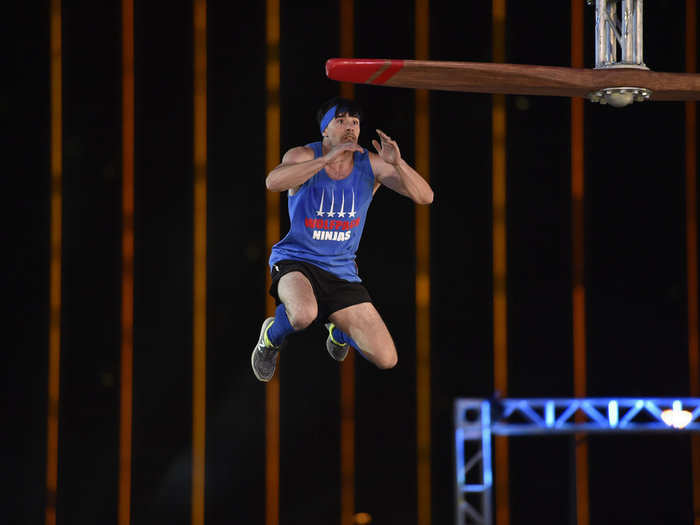
For two weeks before the episode airs, NBC tests out the obstacle course. To do that, they get walk-on contenders as Guinea pigs. Based on how the walk-on do, they tinker with the course, and then choose 20 walk-on contenders in the actual game.
The walk-on contenders are the first to run the course. They're done by sunset, and then the real games begin.
12. Embarrassing yourself is scarier than falling down.
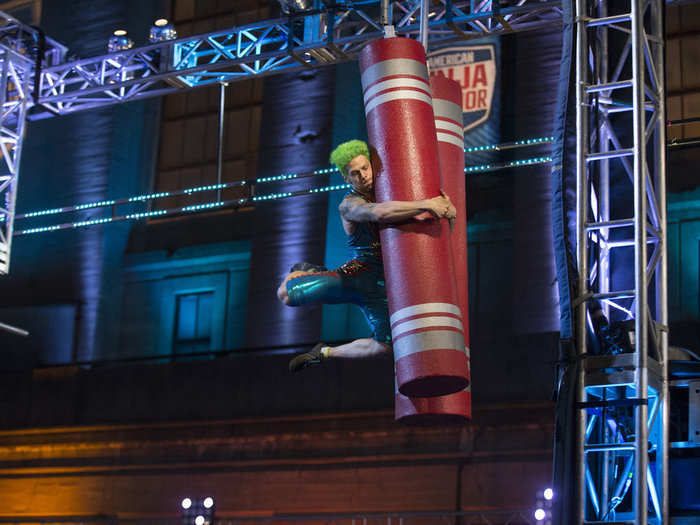
Broadbent and Neuman said they didn't find the course too terrifying. They were sure they'd be safe. It was more about making a dumb miscalculation in the first part of the course and embarrassing yourself on television.
"I've jumped off hundred-foot cliffs and skydived and done other things," Broadbent said. "So I wasn't worried about the course or getting hurt. I've always been pretty good at falling."
13. Three people get to walk along the course with you.
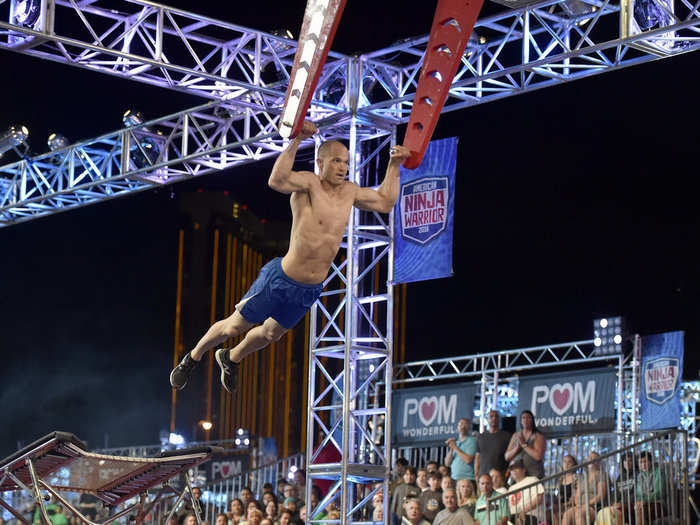
Contestants can bring up to ten people to sit on the bleachers and watch the show live. Three of them can walk along the course as the contestant attempts it.
"That's where they're filming the family reaction [as] you're going through the course," Broadbent said.
14. If you do well, you may stay there until 5 in the morning.
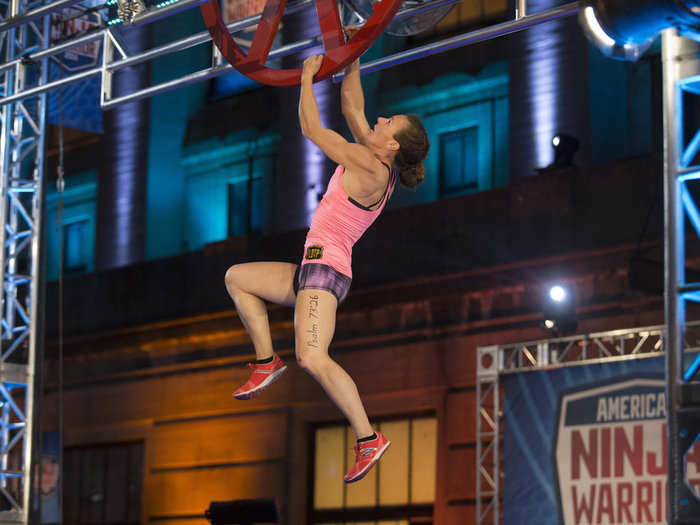
The hours are grueling. On the day the episode is filmed, contestants have to make it to the set at 6 p.m. and don't start the course until the walk-on contenders are done, at sundown. Their run of the course might only be a few minutes, but they have to stick around.
If they make it to the top 30, they're eligible for the finals on the next day. In that case, they need to be on set when the last person runs the course, which could be later than 5 a.m.
In Neuman's case, he got to go home at 2:30 a.m., when it was clear he wouldn't make it to the next round.
Broadbent, however, did very well. He had to stay until "5, maybe 5:30 in the morning," right before the sun came up. He ended up in 32nd place, two spots outside of the final round.
"I spent too much time hot dogging with the crowd," Broadbent said. "Had I just hurried up, I would have made the finals."
15. While you're waiting, you can practice on a trampoline.
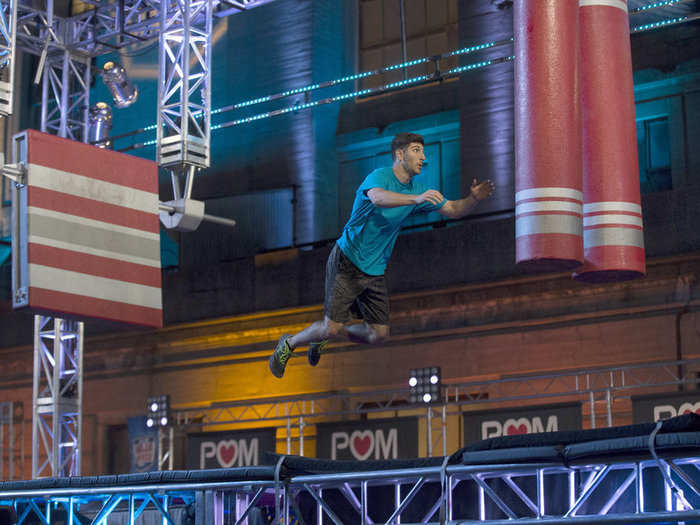
The obstacle course had a part where contestants were supposed to jump on a trampoline and bounce back up, as if in a Mario game. In the back of the set, there was a trampoline that contestants could use for practice.
"That allowed us to get a feel for falling from that height, hitting the trampoline, and then launching," Broadbent said.
16. The competition all takes place on the SECOND day.
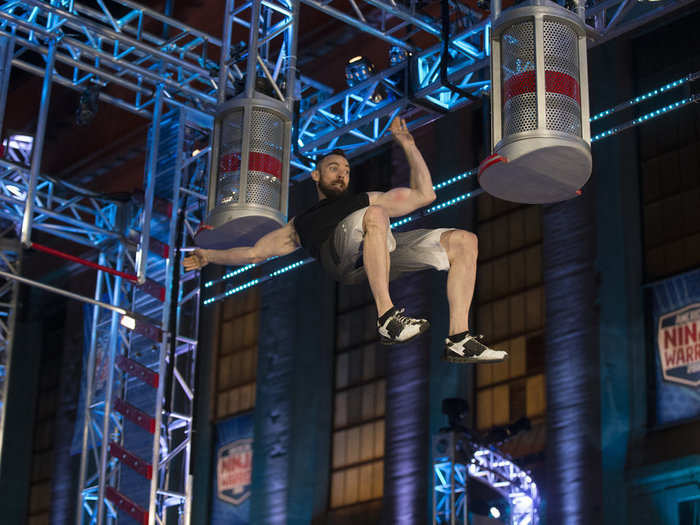
"American Ninja Warrior" takes place over two days. On the second day is the competition. But the previous day, the contestants have to be in the city for B-roll shots.
They went to a rooftop of a building in downtown Philadelphia for a photo and video session. Some of the footage is used on the show. In another building, the contestants get a ten-minute interview, to fill out their character details on the show.
17. Each competition in “American Ninja” warrior is filmed in one night.

Filming an episode of "American Ninja Warrior" can be grueling. Each episode is an hour and a half long. While the footage and interviews are filmed during the day, the actual competition is filmed in one night. Shooting takes place from 6 p.m. until everyone is finished running the course, which run as late as 5 a.m.
18. For such a complicated show, it all runs pretty smoothly.

In addition to the weird hours, you need to make sure a crazy obstacle course is functioning properly and doesn't hurt anyone, that the water in the course doesn't mess up any electronic equipment, and that the camera can get on each contestant's face, even when they're (literally) jumping through hoops.
Surprisingly, there were no technical issues.. Neuman and Broadbent both said the episode went off without a hitch.
"There were no technical problems with the course," Broadbent said. "Everything ran smoothly."
Popular Right Now
Popular Keywords
Advertisement